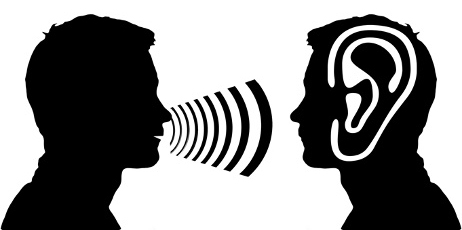Module 4: Hearing
Types of Hearing Loss

The transmission of sounds to the brain through the outer, middle, and inner ear is only part one in the process of hearing. Understanding the meaning of these sounds once they have been transmitted to the brain, is the second part. In the auditory brain center, “hearing” children learn through exposure and practice what sounds mean.
There are different ways that the hearing pathways to the brain can be interrupted and result in a hearing loss.
Conductive Hearing Loss
A conductive hearing loss occurs when sound waves cannot travel easily through the outer or middle ear. A conductive hearing loss can occur in the outer ear caused by a build-up of wax, or in the middle ear due to an injured ear drum, or an infection causing fluid to build up.
A conductive hearing loss can usually be resolved with medical or surgical help. In young children, periods of congestion caused by middle ear infections can also result in delays in speech and language.
Sensorineural Hearing Loss
A sensorineural hearing loss occurs when there is a problem in the inner ear or with the nerve pathway that carries sound to the brain.
A sensorineural hearing loss can result from a variety of causes. Some hearing loss is inherited or occurs as a result of prematurity or complications during pregnancy or birth. In other cases, a sensorineural loss can be an outcome of a childhood illness, or infection, or from a prolonged high fever. Other causes include trauma to the ear or head or exposure to excessive or intense noise.
Sensorineural hearing loss is permanent and more severe than a conductive loss. An assistive device such as a hearing aid or a surgical device such as a cochlear implant can help, but these devices do not restore normal hearing.
Mixed Hearing Loss
According to ASHA (The American Speech-Language Hearing Association),“a mixed hearing loss is the result of damage to conductive pathways of the outer and/or middle ear and to the nerves or sensory hair cells of the inner ear.”
Symptoms of a mixed hearing loss are reduced clarity especially in the understanding of speech. Treatments address the causes of the conductive loss through antibiotics or surgery. Hearing aids are prescribed to address residual conductive loss and the additional permanent sensorineural loss.